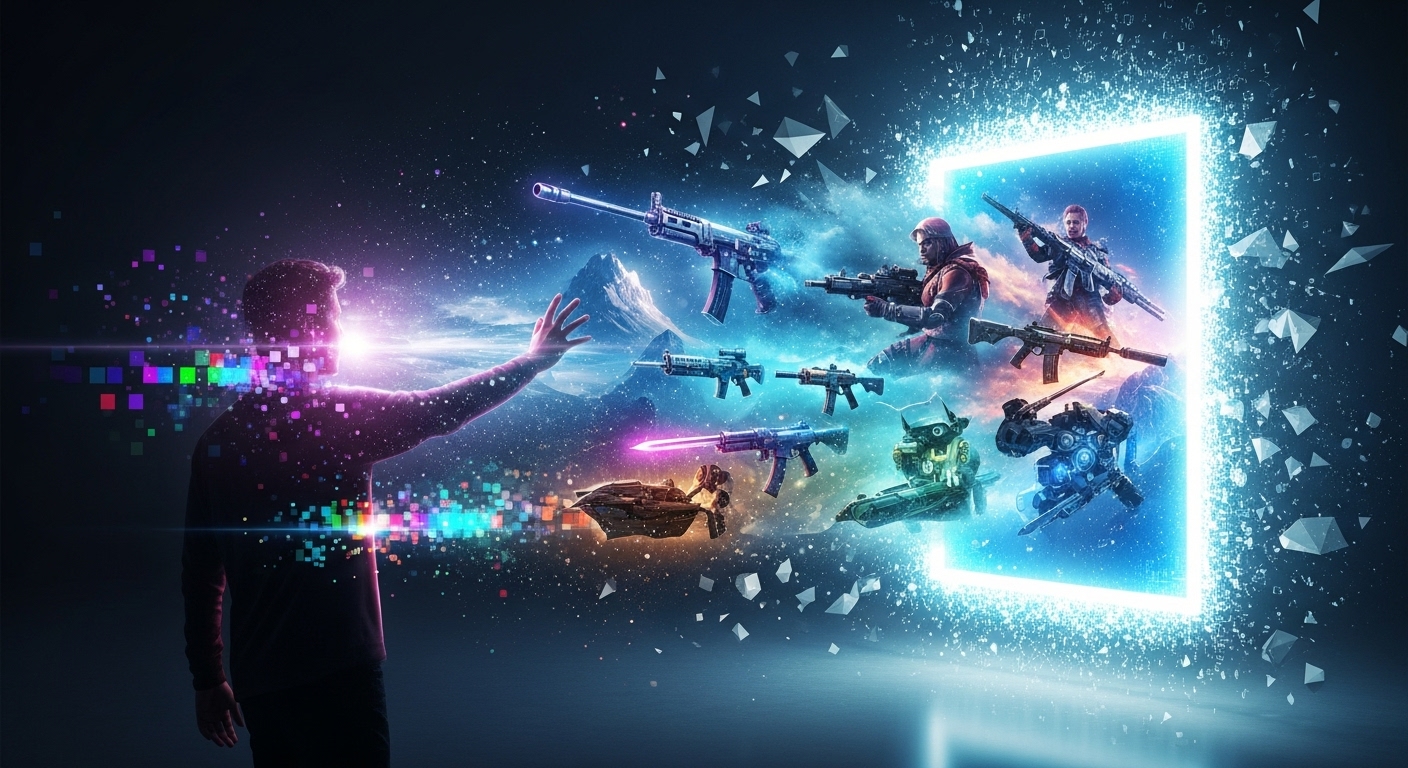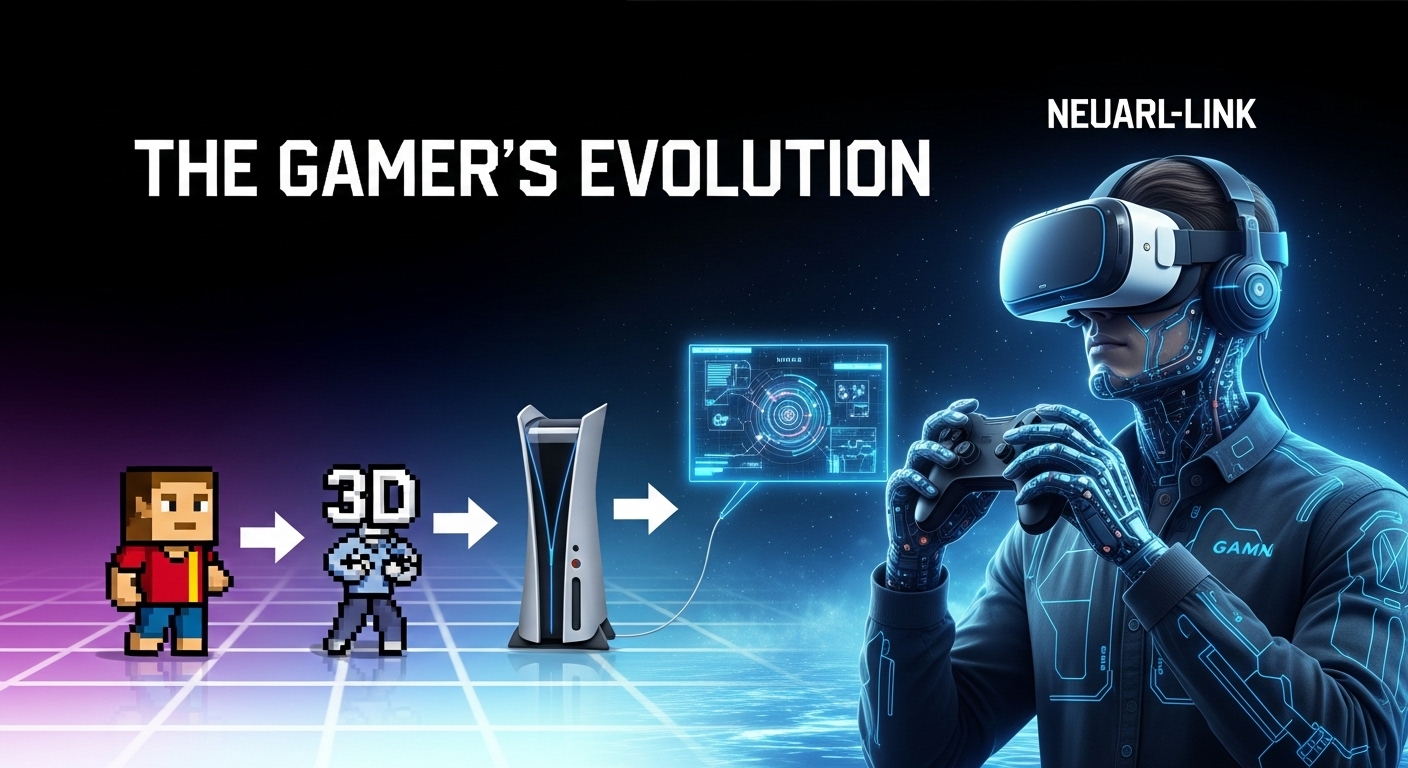Introduction
Gaming has grown from a niche hobby into one of the most influential and profitable industries in the world. What once started as a few pixels moving across a screen has evolved into a cultural and technological phenomenon that shapes entertainment, storytelling, education, and even social interaction. The journey of gaming reflects not only the progress of technology but also the creativity and imagination of humankind. This blog explores the evolution, culture, psychology, and future of gaming, showing how it has become a defining aspect of modern life.
The Birth of Gaming
The story of gaming begins in the 1950s and 1960s when scientists and engineers began experimenting with computer systems. One of the earliest known games, “Tennis for Two,” was created in 1958 by physicist William Higinbotham. Shortly after, in the early 1960s, the Massachusetts Institute of Technology produced “Spacewar!,” a simple space combat game played on a PDP-1 computer. These early creations were not meant for commercial success but to demonstrate computing power and engage users interactively.
By the 1970s, gaming took its first steps toward commercialization. Arcade machines such as “Pong” became popular worldwide. Pong, created by Atari, was a simple table tennis simulation that captivated audiences. The success of Pong marked the birth of the video game industry, inspiring developers to push the boundaries of what was possible. Soon, home consoles appeared, most notably the Atari 2600, allowing players to enjoy games from their living rooms.
The Rise of Consoles and Home Gaming
The late 1970s and early 1980s were the golden age of arcade gaming. Titles like “Pac-Man,” “Donkey Kong,” and “Space Invaders” became cultural icons. Arcades became social hubs, where players gathered to compete for high scores. Meanwhile, home gaming consoles evolved rapidly, bringing entertainment directly into households.
Nintendo entered the scene in the early 1980s, changing the landscape with the release of the Nintendo Entertainment System (NES). Games like “Super Mario Bros.,” “The Legend of Zelda,” and “Metroid” set new standards for design, creativity, and storytelling. The NES revived the video game industry after the infamous crash of 1983, which had been caused by oversaturation and low-quality games.
Sega also emerged as a key player, introducing the Sega Genesis and characters like Sonic the Hedgehog. The competition between Sega and Nintendo became one of the most memorable rivalries in gaming history, pushing both companies to innovate and expand their audiences.
The Era of 3D Graphics and Innovation
The 1990s ushered in a revolutionary shift with the introduction of 3D graphics. Systems like the Sony PlayStation, Nintendo 64, and Sega Saturn brought immersive worlds that captivated players in ways 2D games never could. Games such as “Final Fantasy VII,” “Super Mario 64,” and “The Legend of Zelda: Ocarina of Time” redefined what video games could be—cinematic, emotional, and artistically rich.
The PlayStation’s success established Sony as a gaming powerhouse. It appealed to a slightly older demographic with more mature titles like “Metal Gear Solid,” “Resident Evil,” and “Gran Turismo.” Meanwhile, PC gaming also saw a massive leap forward. With the rise of personal computers, games like “Doom,” “Quake,” and “StarCraft” brought new experiences that emphasized strategy, competition, and community through LAN play.
The Online Revolution
At the turn of the millennium, the rise of the internet transformed gaming yet again. Online multiplayer experiences became the new frontier. Titles like “EverQuest,” “Runescape,” and “World of Warcraft” introduced the concept of persistent online worlds, where thousands of players could interact simultaneously.
Consoles joined the online movement as well. Microsoft’s Xbox Live service, launched in 2002, revolutionized multiplayer gaming by creating a unified online network for console players. It allowed gamers to play with or against others worldwide, transforming gaming from an isolated experience into a deeply social one.
Online gaming also birthed entirely new genres. First-person shooters like “Halo” and “Call of Duty” dominated, while competitive titles like “Counter-Strike” and “League of Legends” laid the foundation for modern esports.
The Rise of Esports
Esports has become one of the fastest-growing industries of the 21st century. Competitive gaming, once considered a hobby, is now a global phenomenon with professional players, massive tournaments, and millions of fans. Games like “Dota 2,” “League of Legends,” “Counter-Strike: Global Offensive,” and “Fortnite” have prize pools that rival traditional sports.
Tournaments are streamed to millions of viewers across the globe, turning gamers into celebrities. Esports organizations operate like professional sports teams, with coaches, analysts, and sponsorships. The industry has also influenced education, with universities offering scholarships for esports athletes and degrees in game design and esports management.
The Cultural Influence of Gaming
Gaming is no longer a subculture—it is mainstream culture. The characters, stories, and aesthetics of games influence movies, fashion, music, and even politics. Iconic figures like Mario, Master Chief, and Lara Croft are recognized worldwide, much like movie stars.
Streaming platforms have amplified gaming’s reach. Content creators and streamers have built massive communities around their favorite games, connecting millions of fans. These creators have turned gaming into a form of entertainment that blends gameplay, commentary, humor, and personality.
Gaming also encourages creativity. Platforms like “Minecraft” and “Roblox” allow players to design their own worlds and experiences, fostering imagination and innovation. Meanwhile, narrative-driven games like “The Last of Us” and “Red Dead Redemption 2” are celebrated as modern works of art, blending visual storytelling with emotional depth.
Gaming as Social Connection
Gaming has evolved into a social experience that bridges distance and culture. Online multiplayer games create communities that transcend geographical boundaries. For many people, gaming is not just a pastime—it’s a way to stay connected with friends and family.
In cooperative games, teamwork and communication are essential. Whether it’s coordinating strategies in “Valorant” or surviving together in “Fortnite,” gaming strengthens bonds and teaches collaboration. For introverts or those struggling with social anxiety, gaming provides a safe space to interact and express themselves.
Even beyond online multiplayer, gaming communities thrive on forums, social media, and events like conventions. Gatherings such as E3 and Gamescom celebrate the shared passion for gaming, allowing fans to connect with developers and each other.
The Psychology of Gaming
Understanding why people play games is a fascinating study of human psychology. Games fulfill basic psychological needs—autonomy, competence, and relatedness. Players enjoy the sense of control (autonomy), the challenge and improvement of skills (competence), and the connection with others (relatedness).
Gaming can also serve as a form of escapism, offering players a way to temporarily leave behind the pressures of daily life and immerse themselves in new worlds. However, it’s not purely an escape; it can be therapeutic. Many studies have shown that gaming can improve cognitive function, problem-solving skills, and hand-eye coordination.
Of course, like any form of entertainment, moderation is key. Excessive gaming can lead to negative outcomes, such as reduced physical activity or social isolation. The industry and community continue to explore ways to promote healthy gaming habits, including parental controls, screen-time limits, and promoting digital well-being.
The Business and Economics of Gaming
Today, gaming is a trillion-dollar industry that rivals—and often surpasses—film and music combined. The business models have evolved dramatically over the decades. Where once players bought physical cartridges or discs, now digital downloads and online marketplaces dominate. Subscription models like Game Pass and cloud gaming services have transformed accessibility.
Microtransactions and in-game purchases have become a major revenue source, though not without controversy. Some players criticize these practices as exploitative, while others appreciate the ability to customize experiences. Developers continue to experiment with balancing profitability and player satisfaction.
Independent (indie) developers have also flourished thanks to digital distribution. Platforms allow small teams or even solo creators to publish games to global audiences. Titles like “Undertale,” “Hollow Knight,” and “Celeste” prove that creativity and storytelling can triumph over massive budgets.
Technological Innovations Driving the Future
Technology continues to shape gaming’s evolution. Virtual reality (VR) and augmented reality (AR) offer immersive experiences that blur the lines between the digital and physical worlds. Devices like the Meta Quest and PlayStation VR bring players directly into the game environment, creating unparalleled immersion.
Artificial intelligence plays an increasing role in game design, from creating more lifelike non-player characters to generating dynamic worlds that adapt to player behavior. Cloud gaming also promises to make high-end games accessible on any device, removing hardware limitations.
The rise of mobile gaming has further democratized gaming. With smartphones in nearly every pocket, billions of people worldwide now play games daily. Mobile titles like “Clash of Clans,” “PUBG Mobile,” and “Genshin Impact” show how portable gaming can achieve console-quality experiences.
The Art of Storytelling in Games
One of the most profound shifts in gaming has been the focus on storytelling. Modern games are more than just mechanics—they are emotional journeys. Developers have mastered the art of interactive storytelling, allowing players to shape the narrative through their choices.
Games like “Mass Effect,” “Detroit: Become Human,” and “The Witcher 3: Wild Hunt” give players moral dilemmas and branching storylines, making each playthrough unique. This level of agency connects players more deeply with the narrative than passive media ever could.
Moreover, the visual and audio design in games rival that of cinema. From orchestral scores to realistic voice acting, games have become a fusion of art forms, blending writing, music, design, and performance into a unified experience.
The Educational and Therapeutic Power of Games
Beyond entertainment, gaming has proven to be an effective tool for education and therapy. Educational games teach problem-solving, critical thinking, and creativity. Simulation games like “SimCity” or “Kerbal Space Program” introduce players to concepts in engineering, management, and science.
In healthcare, “serious games” are used for rehabilitation and therapy. For example, games designed for physical therapy can motivate patients to engage with their exercises. Meanwhile, cognitive training games help improve memory and attention in both children and older adults.
Even in mental health, games have shown promise. Titles like “Celeste” and “Gris” explore themes of anxiety and depression, helping players process emotions. Gaming communities also serve as support networks, where players find understanding and companionship.
Challenges Facing the Gaming Industry
Despite its success, gaming faces several challenges. One major issue is toxicity in online environments. Harassment, cheating, and negative behavior can harm communities. Developers are investing in moderation tools and AI systems to promote safer gaming spaces.
Another challenge is representation. Historically, games often lacked diversity in characters and stories. However, the industry is evolving to include more voices, perspectives, and inclusive narratives that reflect the global audience.
Game development itself is demanding. Crunch culture—long hours and high stress—has sparked discussions about working conditions in the industry. Developers and players alike are calling for more sustainable practices to ensure that creativity thrives without exploitation.
The Future of Gaming
Looking ahead, the future of gaming seems limitless. As technology advances, we may soon experience worlds indistinguishable from reality. Cloud computing and AI-driven content generation could create infinite, evolving universes.
The boundaries between player and creator are also dissolving. Games increasingly allow players to build and share their own content, creating a feedback loop of creativity. Communities are becoming co-developers, shaping the direction of the games they love.
Additionally, gaming’s integration with other forms of media continues to grow. Film adaptations of games, virtual concerts inside games, and crossovers between brands show that gaming is not an isolated medium but a cultural nexus.
Conclusion
From the blinking pixels of the 1970s to the vast open worlds of today, gaming has undergone an extraordinary transformation. It is more than a form of entertainment—it is an art form, a social platform, and a technological frontier. It reflects the creativity, ambition, and diversity of humanity itself.
As we move forward, gaming will continue to evolve alongside society, shaping and reflecting our dreams, fears, and imaginations. Whether you are a casual player or a devoted gamer, there is no denying that gaming has become an essential part of modern life—a digital canvas where we all, in some way, find connection, challenge, and joy.



